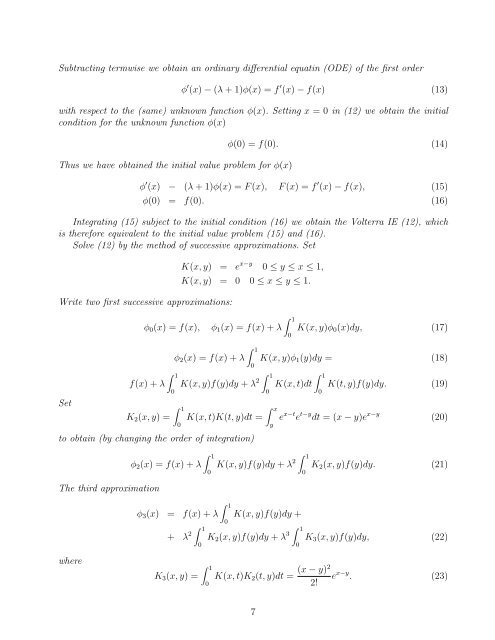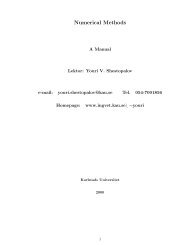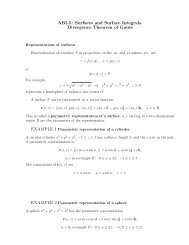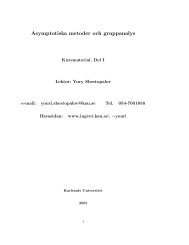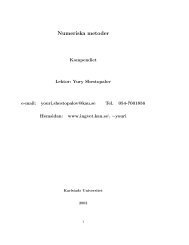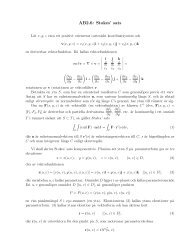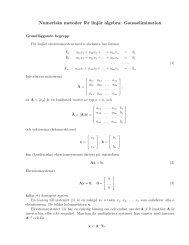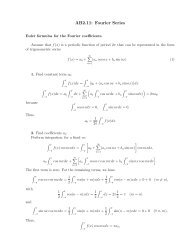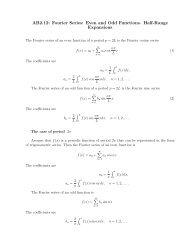Create successful ePaper yourself
Turn your PDF publications into a flip-book with our unique Google optimized e-Paper software.
Subtracting termwise we obtain an ordinary differential equatin (ODE) of the first orderφ ′ (x) − (λ + 1)φ(x) = f ′ (x) − f(x) (13)with respect to the (same) unknown function φ(x). Setting x = 0 in (12) we obtain the initialcondition for the unknown function φ(x)Thus we have obtained the initial value problem for φ(x)φ(0) = f(0). (14)φ ′ (x) − (λ + 1)φ(x) = F (x), F (x) = f ′ (x) − f(x), (15)φ(0) = f(0). (16)Integrating (15) subject to the initial condition (16) we obtain the Volterra IE (12), whichis therefore equivalent to the initial value problem (15) and (16).Solve (12) by the method of successive approximations. SetWrite two first successive approximations:K(x, y) = e x−y 0 ≤ y ≤ x ≤ 1,K(x, y) = 0 0 ≤ x ≤ y ≤ 1.φ 0 (x) = f(x),∫ 1φ 1 (x) = f(x) + λ K(x, y)φ 0 (x)dy, (17)0Set∫ 1f(x) + λ0K 2 (x, y) =∫ 1φ 2 (x) = f(x) + λ∫ 10K(x, y)f(y)dy + λ 2 ∫ 1K(x, t)K(t, y)dt =to obtain (by changing the order of integration)The third approximation∫ 1φ 2 (x) = f(x) + λ00K(x, y)φ 1 (y)dy = (18)0∫ xy∫ 1K(x, t)dt K(t, y)f(y)dy. (19)0e x−t e t−y dt = (x − y)e x−y (20)∫ 1K(x, y)f(y)dy + λ 2 K 2 (x, y)f(y)dy. (21)0where∫ 1φ 3 (x) = f(x) + λ K(x, y)f(y)dy +0∫ 1∫ 1+ λ 2 K 2 (x, y)f(y)dy + λ 3K 3 (x, y) =0∫ 10K(x, t)K 2 (t, y)dt =0K 3 (x, y)f(y)dy, (22)(x − y)2e x−y . (23)2!7


